How to Fix Nerd Neck
I’ve adapted this long form blog post from an X (Twitter) thread that went viral.
By popular demand, here’s a series of tips for addressing this increasingly common issue.
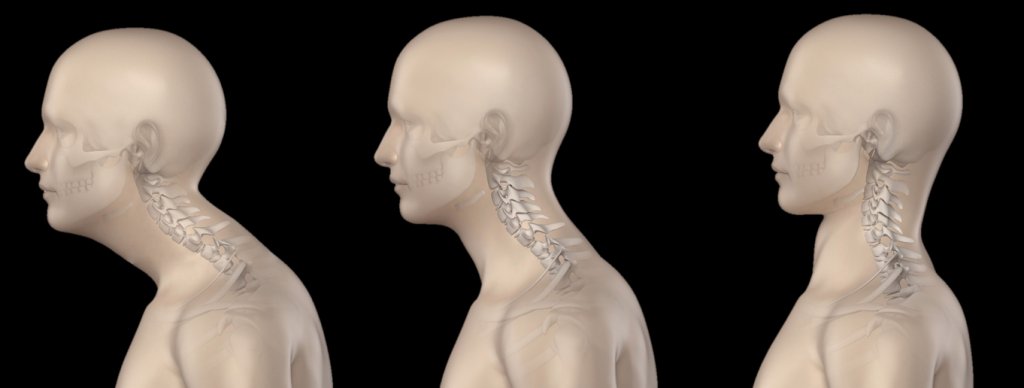
What is Nerd Neck?
Nerd Neck the latest nickname for chronic forward head posture. Text neck, tech neck, and similar variants may also refer to repetitive strain injuries caused by this chronic posture. As the names suggest, it’s increasingly caused by frequent sedentary activities that tend to take up ever larger chunks of many modern-day lifestyles: sitting, reading, texting, looking down at computer screens, etc.
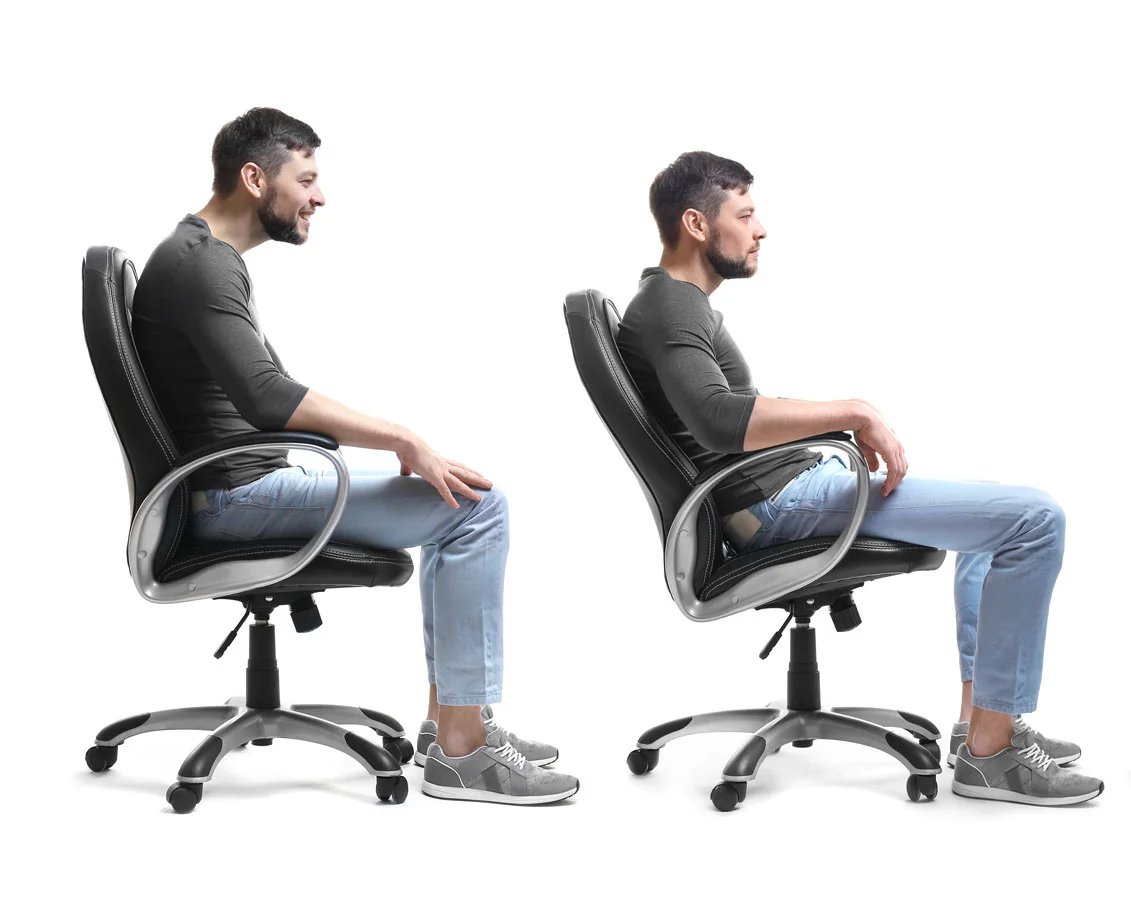
Correcting root causes
Before correction, it’s a good idea to give attention to prevention by attacking root causes. Elevate your screens to eye level so your head is resting naturally atop your neck while you look forward at them.
Dragonn erg stool. Will force better posture, dynamic adjustment, and breaks.
— Stedman Halliday (@stedmanhalliday) June 2, 2024
You should also elevate your monitor to eye level to avoid neck strain. pic.twitter.com/jPrlon3LTz
Removing ever-present back support can allow the spine and its local musculature to better support the head and neck. Standing desks, ergonomic stools, breaks, desk treadmills, etc. are your allies. Sitting a bit is fine, just don’t stay parked all day everyday!
More to say about the lower body complements to these issues in a future post, but for now, check out Emily’s advice for your hips:
How to Unlock Your Hips 101
— Emily (@EmilybyNight) June 18, 2024
[Reminder: everyone has a different range of motion, hips hold a lot of emotion, so go gently and have FUN] pic.twitter.com/FzaZLOzvWq
Corrective exercise
Corrective exercise specialists call nerd neck “upper crossed syndrome.” That name comes from how underactive (red) and overactive (green) muscles line up in a cross-like pattern to produce the forward head position when observed in profile.
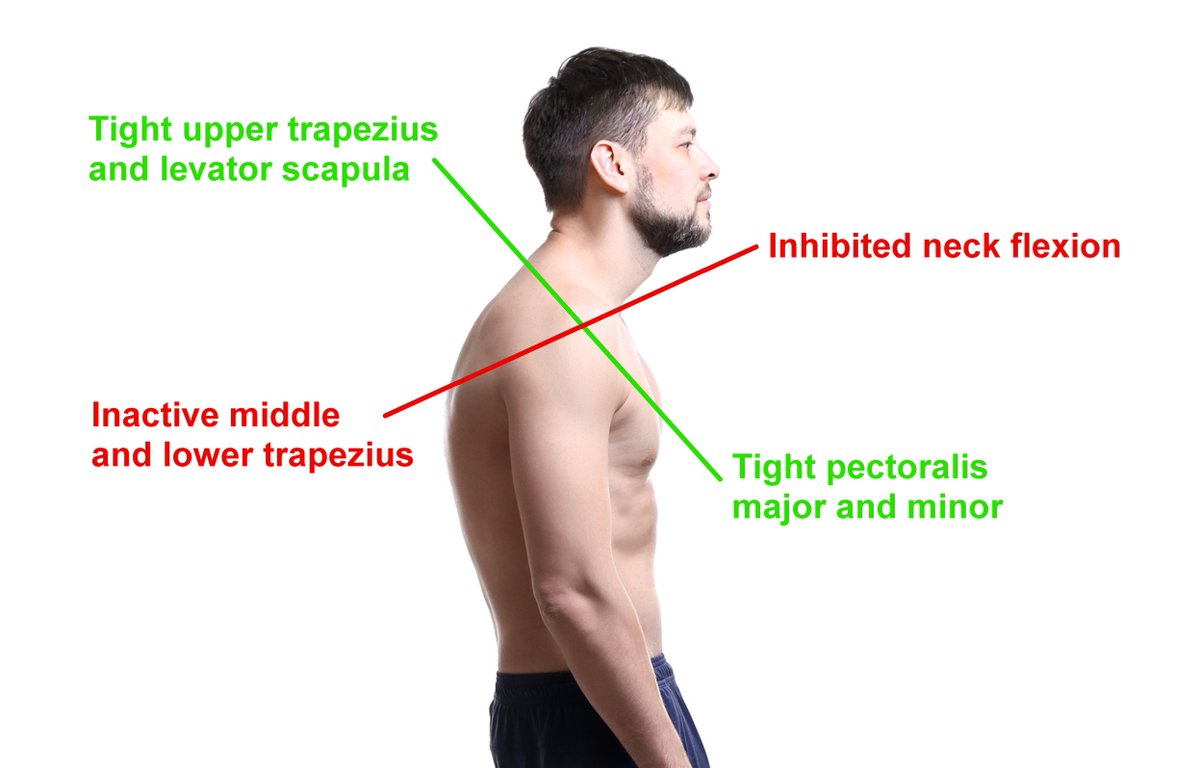
Myofascial release and stretching
Step one of correction is to remove some tension from tight areas (green above). Foam rolling, massage guns, and other myofascial release activities are great for this.
2. Have some thingies to smash and knead yourself with throughout the day so you don't turn into a sore potate pic.twitter.com/0zZMhNeNht
— Stedman Halliday (@stedmanhalliday) June 2, 2024
I’m going to plug Bex Naj for good posts and workshops on myofascial release techniques and more Check her site for free videos too!
on Sunday 10/8 i'm offering a livestream somatic foam rolling & myofascial release workshop with an upper body focus
— + big buddhi + (@embryosophy) September 29, 2023
we'll start with a fascial anatomy lesson, then dive in to remobilizing places where our habits of bodymind have gotten a little stuck
link in bio, musings below pic.twitter.com/AEuB26xr4o
Continue to relieve tension in tight areas by stretching them. Start with an upper trapezius stretch: sit on one hand, tilt your head to the opposite side, and gently pull your head toward your shoulder with the other hand. Hold for 20-30 seconds.

Up next: levator scapula stretch. Sit on one hand, rotate your head about 45 degrees to the opposite side, and gently pull your head down towards your armpit.

Door frame or wall stretches are great for tight pectoral muscles. For the pectoralis major, just hold your hand straight out against the frame and walk through, letting it fall back. The pec minor stretch is similar, but just bend your elbow and place your forearm on the wall. [You’ll probably want your hand higher up the wall for a good pec minor stretch as per this correction from Dan.]
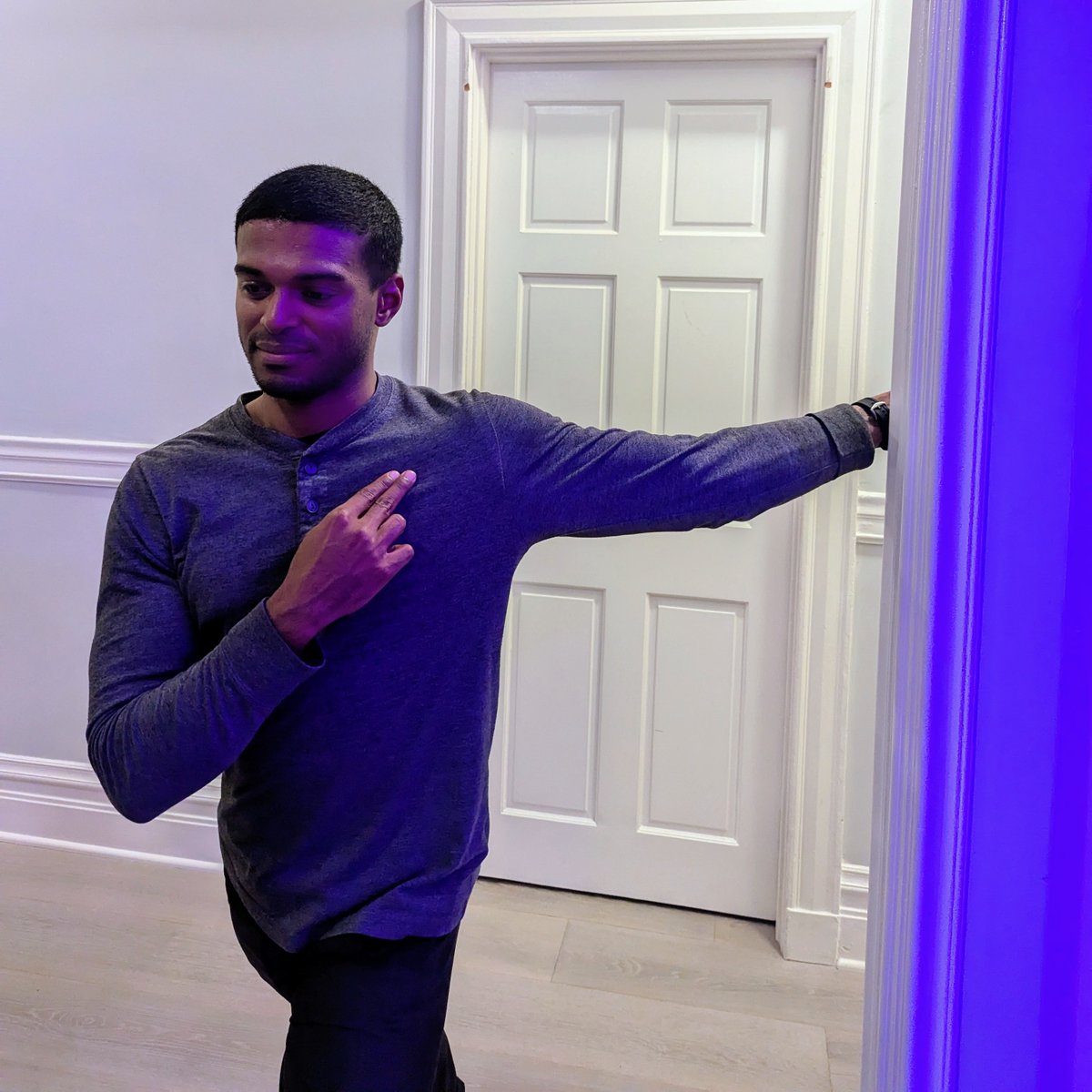
For the stuff-havers out there, check out the Range (formerly the Nuckle) from Aletha Health (h/t Jeff Tang). You can use it in a variety of positions and it’s also really good for muscles around the head, neck, and shoulders.
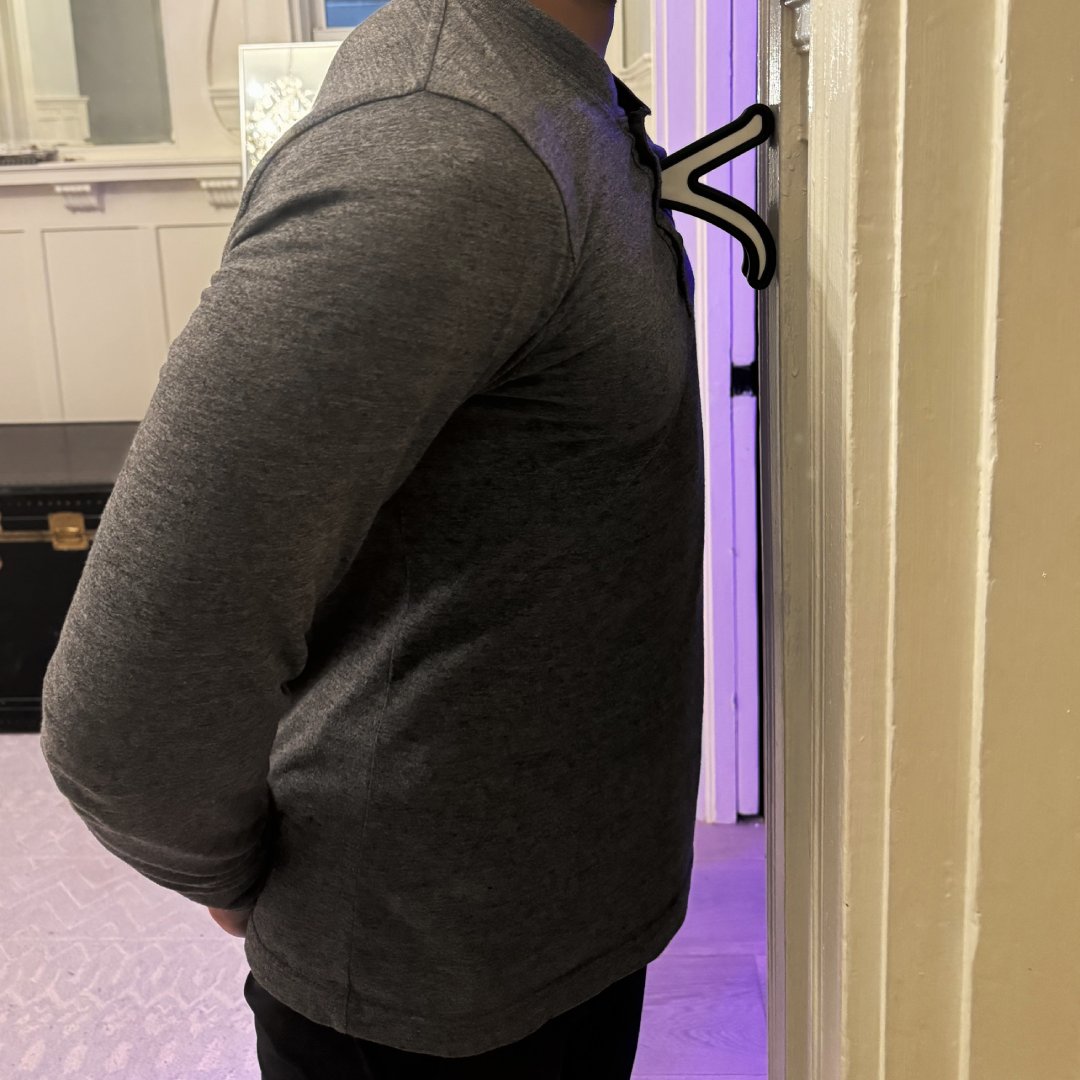
Strength conditioning
After loosening tight muscles, progress to conditioning to strengthen inactive muscles. For the middle and lower trapezius muscles, scapular retraction is your best friend. Rows, face pulls, anything else that pulls your elbows back and shoulder blades together. [Thanks to Jared Seidel for the demo.]
If you’ve got nothing to pull, you can try retraction while prone. Lie down on your stomach and raise your arms in the shape of a Y, T, or Ls and hold for 20–30 seconds. You can also do this while elevated on a bench or yoga ball.
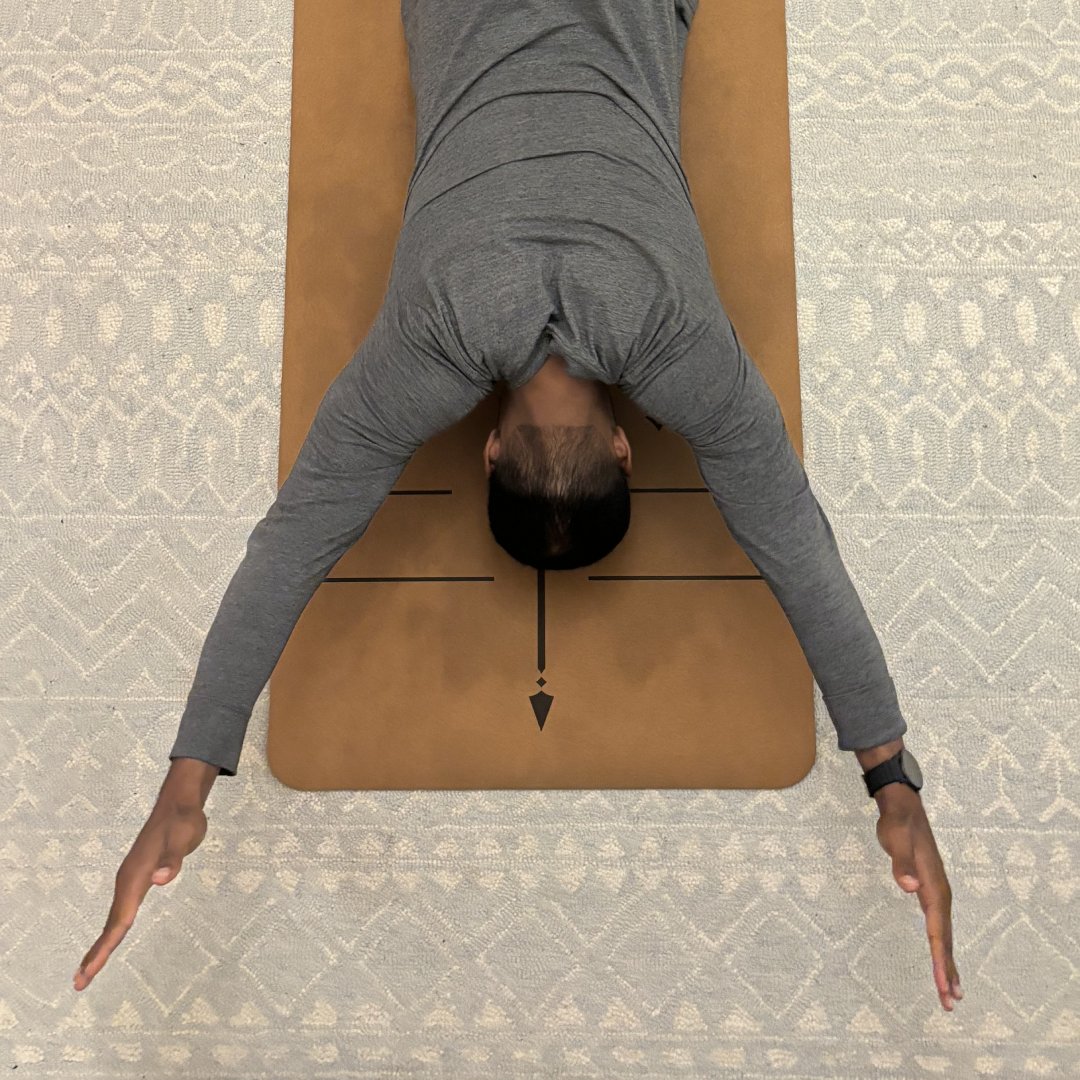
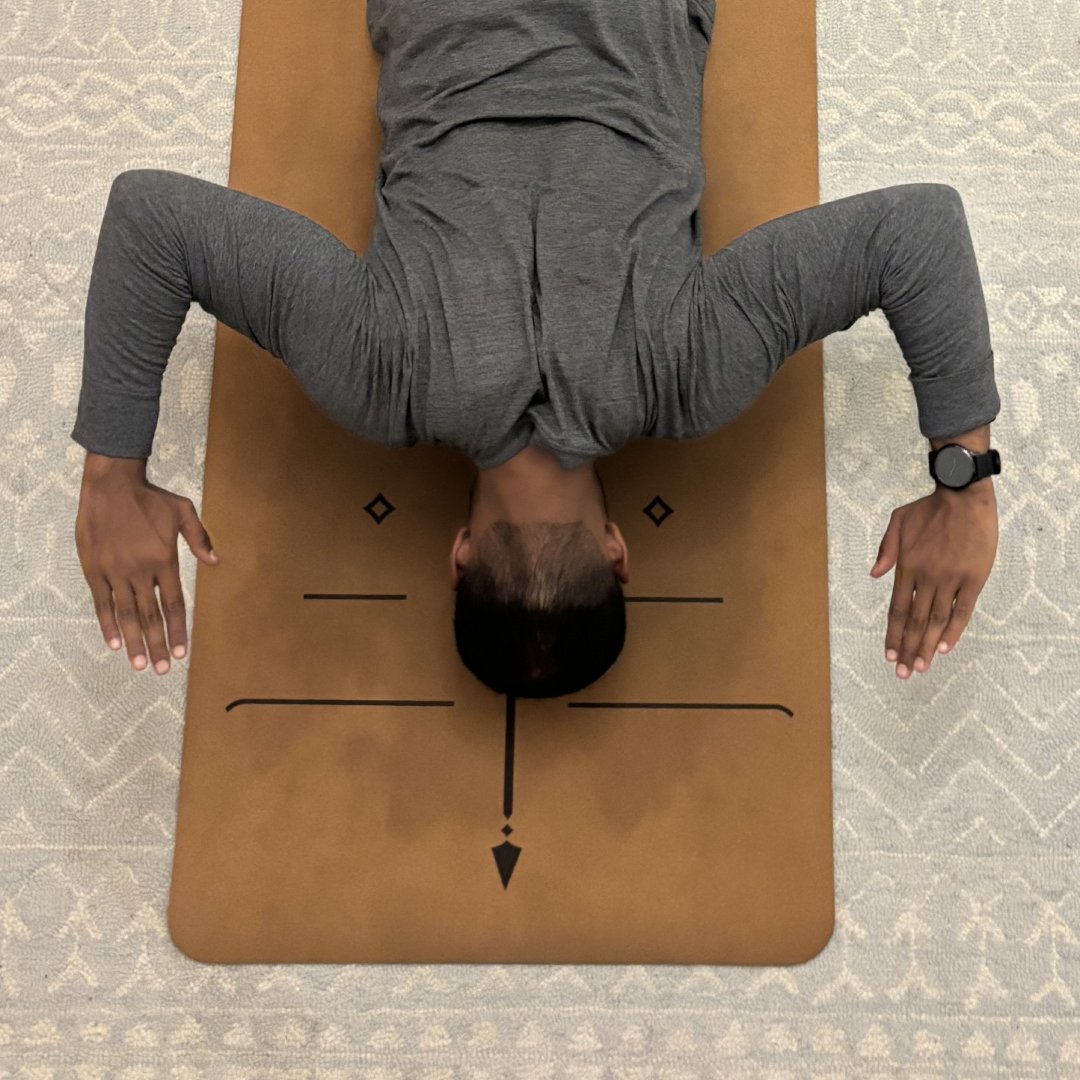
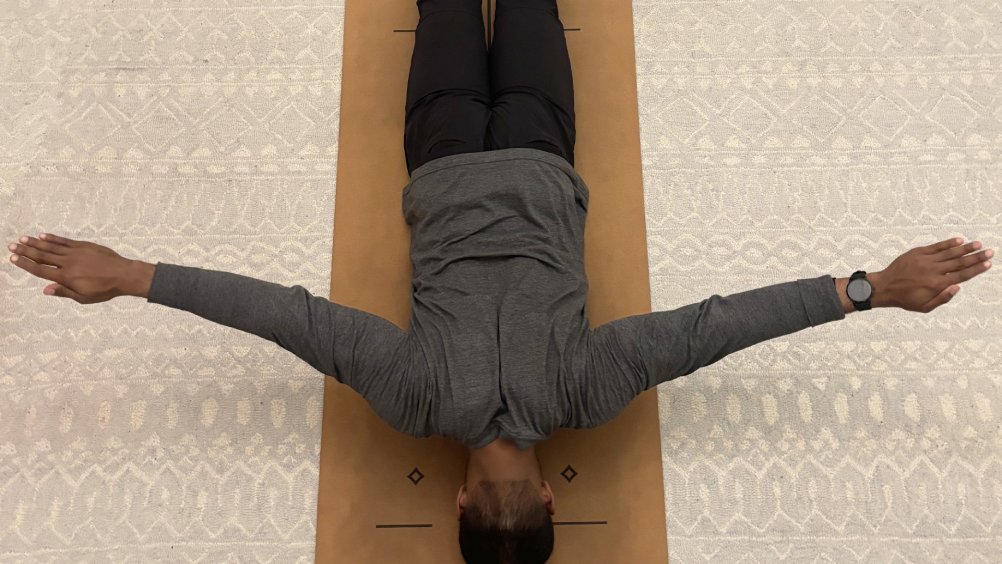
Neck flexibility
The last step is to improve neck flexion. Try chin tucks: slowly pull your chin backward without nodding downward, and hold. You can also brace your forehead against your hands and use your deep neck flexors to push.

Those are the basics. Rinse, repeat, and practice mindful postural habits from now on. Keep your phone screen at eye level, try not to drop your head when reading, and pull your shoulders and head back when you catch yourself slipping.
Check your habits routinely! The things you do the most every day hold the most potential for improvement. NO MORE NERD NECKING!
love this thread, ty! Bookmarked
— Daniel (@nearlydaniel) August 13, 2024
also one thing to add that I've found helpful -- when walking, mentally cue yourself to "keep your eyes on the horizon line" (basically same as keeping your phone at eye level, just without your phone)
I hope these tips helped you. Message me on X (Twitter) if you’d like to chat about corrective exercise or health in general. I try to be generous with my time and attention and share what I know out of a passion to help people pursue their best health. Thanks for reading.